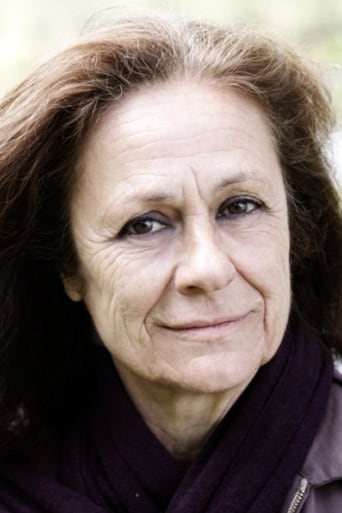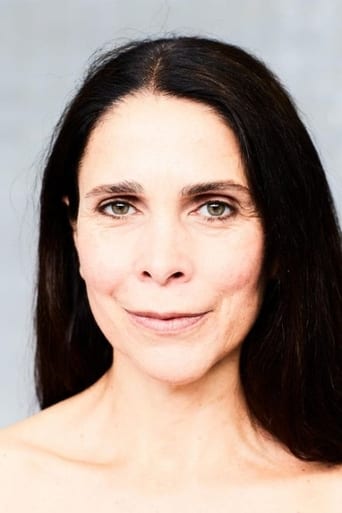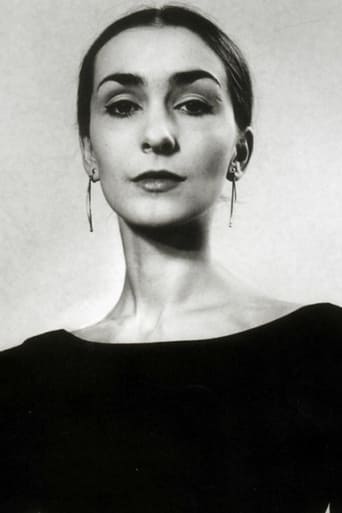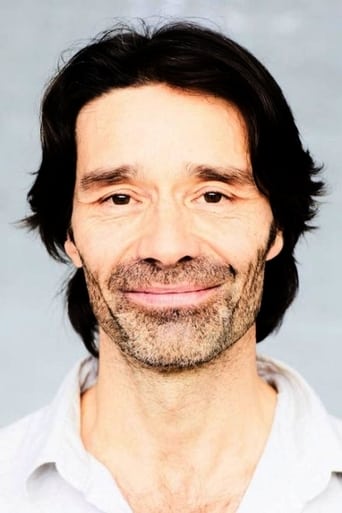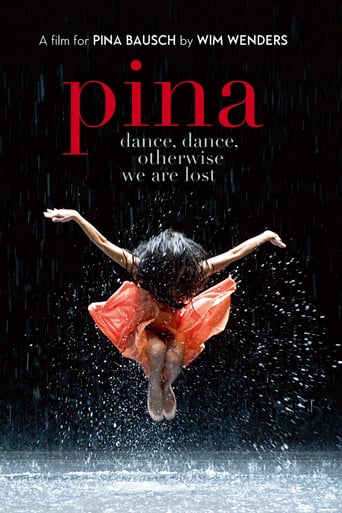
Pina
December. 23,2011 PGPina is a feature-length dance film in 3D with the ensemble of the Tanztheater Wuppertal Pina Bausch, featuring the unique and inspiring art of the great German choreographer, who died in the summer of 2009.
Similar titles


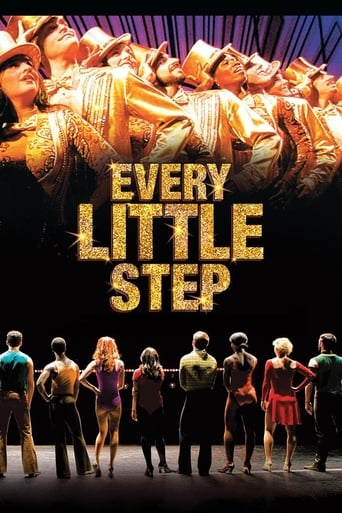
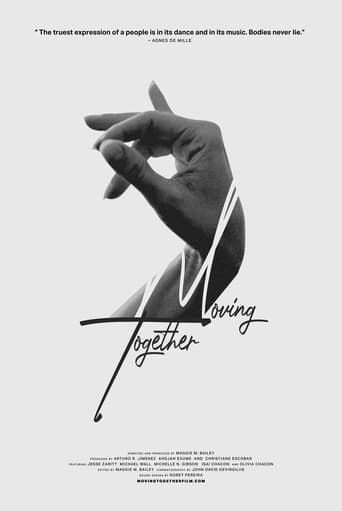
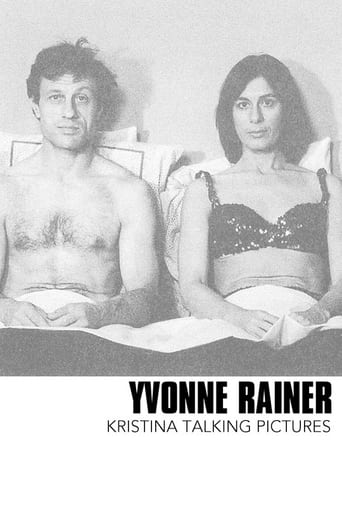
You May Also Like


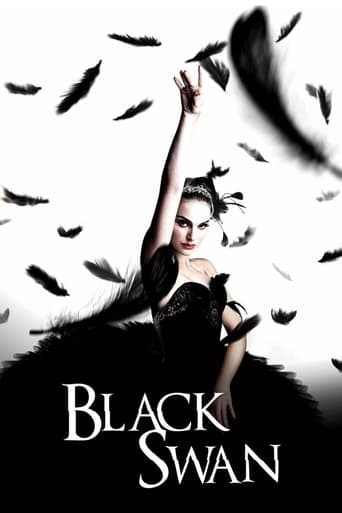
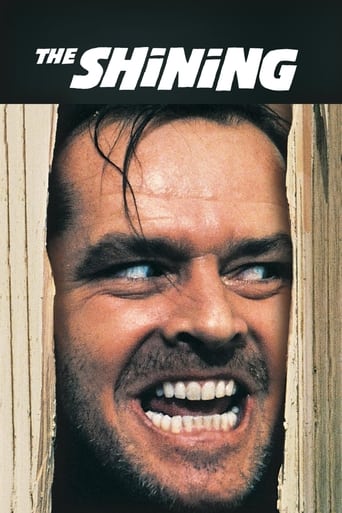

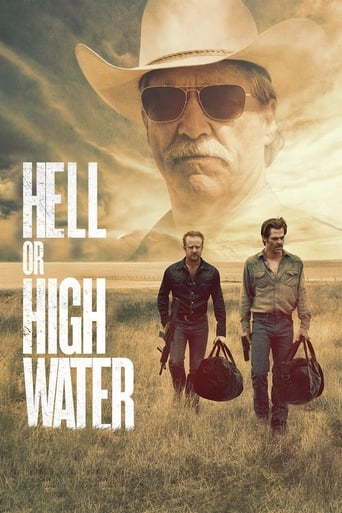
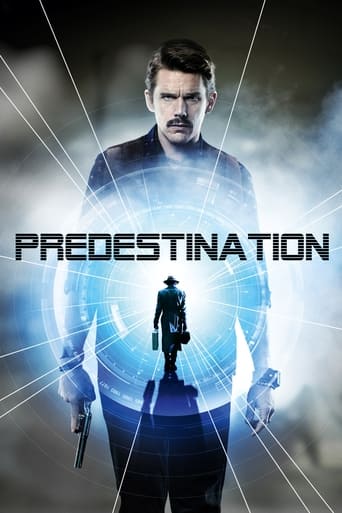

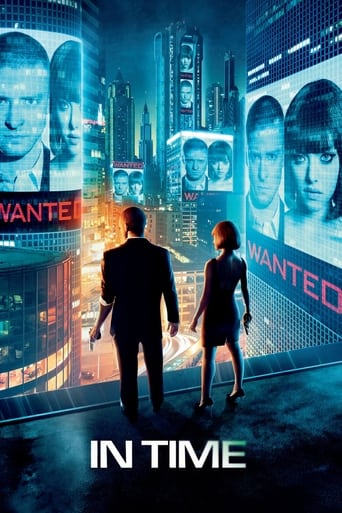
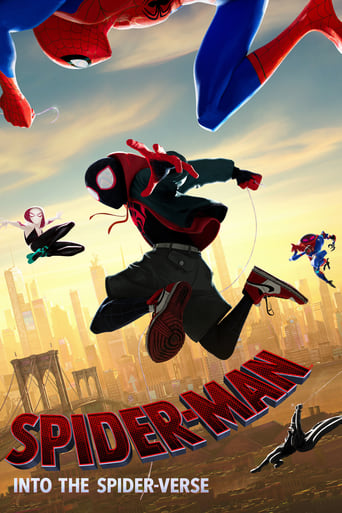
Reviews
Good concept, poorly executed.
It's funny, it's tense, it features two great performances from two actors and the director expertly creates a web of odd tension where you actually don't know what is happening for the majority of the run time.
The acting in this movie is really good.
True to its essence, the characters remain on the same line and manage to entertain the viewer, each highlighting their own distinctive qualities or touches.
I saw Wim Wenders' «Pina – Dance, Dance, Otherwise We Are Lost» after watching the fine documentary «The Salt of the Earth (A Journey with Sebastião Salgado)» (which he made three years later), and the inversion proved disappointing. When Pina Bausch died unexpectedly, without the dancer and choreographer by his side (as he projected the film since the 1980s), the end result is only fair. I do not know why Wenders thought that 3D could be the "solution" to film dance, when in the past this performing manifestation has been registered in more than adequate ways, without relying much on visual technology: for instance, Norman McLaren made his shorts «Narcissus» and «Pas de deux» with less resources, just as Carlos Saura did «Bodas de sangre», without diminishing the beauty of dance or making its filming less effective. In the end, the majority of living beings who will watch «Pina» will do so in two dimensions. On the other hand, I did not see the need to move the choreographies to exteriors, sometimes in ugly locations (a quarry, for example, or the urban streets with signs of drug stores, lottery or the "big M"), when the best images and moments are those registered in sets of ambitious (and achieved) expressiveness, decorated with few elements, as the sets for «Le sacre du printemps», «Café Müller» and «Vollmond». Beautiful testimonies by Bausch's dancers, come from all corners of the world, and the choreographies rescue this documentary, which goes on for 100 minutes that sometimes seemed endless to me. Yet I would not tell anyone not to see Wender's film: more for dance reasons than for cinematic value, «Pina» is a registry of the work of a great artist, of a daughter of two centuries. It deserves to be recommended, the more so because there are many persons who will enjoy it to the fullest.
Reading some the interviews that Wim Wenders gave about Pina I learned that this film ended to be something quite different from what the director originally intended. While fascinated a long time by Pina Bausch's creation and especially Cafe Muller, Wenders could not find for a long time the appropriate means of expression to make a film about it. And then something happened - technology developed and 3D came back with a revenge. The revelation was that 3D and filmed dancing are a perfect fit. The result is a film which is unique in its way, hard to enter in any category, a good example actually of how relative and futile categories are.What we get on screen is a portrait and a homage to Pina Bausch. While Wim Wenders authored many documentaries about music or history of cinema, this film is not the usual documentary, neither is it a biography (no chronology, no theoretical analysis of her work), but a portrait of an artist who was among the few who revolutionized her discipline, a portrait assembled from testimonies from the dancers who worked with her (although some say no words) and most of all by her art as it was filmed and brought to screen. Maybe the best description I found is the one in the German sub-title of the movie - a Tanzfilm, a Dance Movie.There are indeed a great deal of beautifully filmed ballet scenes, in different environments, and here we see the hand of a master director, as almost all required innovation in building the sets and making them look like belonging to a cinema event, not to a filmed performance. As I am a fervent spectator of filmed performances of contemporary dance on Mezzo TV especially, I am pretty familiar with the genre. Wenders succeeds here to work the synthesis, and Pina is both a ballet performance of first class and a cinema event combining the best of the two arts and amplifying it by the power of 3D. The usage of the technology results not only in viewers seeing better and more clearly the performance and the sets (these too), but also making them part of the creative process. In several scenes in the film we see Pina Bausch during repetitions mixing with the dancers, watching and talking with them, working together as a team. With the 3D effect the spectators become part of the work process, part of the show, part of the homage Wenders brings to the great choreographer.
Those expecting a film similar to Step Up 3D will get something quite different.Directed by Wim Wenders comes Pina, a dance documentary celebrating the life of late choreographer Pina Bausch.Featuring Bausch's most noted dance pieces in the Tanztheater (dance theatre) style, the film consists of four pieces titled Le sacre du printemps (The Rite of Spring), Cafe Mueller (a cafe in the German town Solingen, where Bausch grew up) ,Kontaktof and Vollmond. Along with these pieces, are short snippets of interviews with her dancers and further dance routines shot around Wuppertal, Germany.Wenders was originally set to make a documentary on the German choreographer. However, filming was cut short due to her unexpected death in 2009. While Wenders cancelled the production, Bausch's dancers convinced him to continue shooting anyway.While some of the routines are slow at times, shooting in 3D has certainly helped make them more appealing. Adding a whole new dimension to dance, the cinematography of the film is visually stunning.But don't expect the documentary to be like mainstream dance film Step Up 3D. Pina is a more artistic take on dance, encouraging the audience to interpret the story behind each routine.
It seems the idea about biography — the standard biography — is to be exposed to great souls. The greater and more complex the better, and as long as we stay coherent, the more exposure the better. Apparently German filmmaker Wenders had for decades planned such an exposure of Pina Bausch.She surely is a banquet of a soul, and any film that captures morsels would be worth it. I was not aware of her before being introduced by a trusted friend, and now I am hungry for more. She is something of a radical in dance, a Rolfer of motion.Dance for her is something you must do, you must. Her troupe is drawn from all over the world and we see them all here: intense beauties, throwing their lives. She seems to have touched every one of them with some deep insight into the linkage among the urge to live, the danger of movement and the fearlessness to let go. Of each of these faces, the film has one minute or so, with their voice over stating some way that Pina pulled 'size' from them. Then usually we see that soul in motion. Sometimes we are captivated, sometimes simply thrilled. Once in a while we must puzzle about something that seems just silly. But the fact that the same disciplined passion can be brought to it all makes the puzzling bits all the more valuable. Pina died immediately before the thing was made and one wonders what she would have let show, what she would have rejected, because it seems so uneven.We have a disconnect here that may not be so obvious on the first round through. Wenders is a skilled filmmaker, but his approach is storytelling. Staging and motion is in his films only as one of several devices to tell a story. Pina is superficially in the same mold: her choreography has 'explanations' attached and the tone is overtly theatrical, but this is of a completely different nature. We are in Pina's world as an *artifact* of the performance, an essential entity like a floor, and by no stretch the nexus. We are there to be performed to, to be scared, to be shined upon so that the dancers will know they have light. But they are also scaring and performing for themselves, each other, even for the floor. The moment matters. Short form — the immediate — is the only form for Pina. Wenders in contrast is a long form guy, a relative pedestrian. What he brings is a disciplined, cold eye that can capture with perfection. His filmmaking has no passion, no risk, only craft.I have to admit that I greatly admire what he did here, though I did not see it in the lauded 3D format. His staging (sometimes tricky) and some of the dance edits are wonderful. But I had the feeling that I had radios tuned to two different German-speaking stations and had to consciously switch my attention from the cinema to the dance. It would have been wonderful if we had DVD extras that just let a dance go without the cinematic imposition. The one German filmmaker that I find worthwhile is Herzog, and that is because he is more like Pina than Wenders. He takes risks; in his early days these were also physically dangerous. His films are not very intellectual, but have visceral energy that seems to have been dug from Nature's absolute core. I wonder if he had attempted this film if there would have been a clash, a competition of such digging.Perhaps it is wise to have Wenders, a placid but attentive viewer intermediate for us. But see, then we allow him to make the decision for us about how committed we can be in terms of reach into the space of these dances. And I want more depth — not the perception of depth, but participation in the fluid skin.The only extra on this region 2 (!) DVD was a short interview with Wenders with such poor sound one wonders what he was thinking. Ted's Evaluation -- 3 of 3: Worth watching.
Top Streaming Movies















